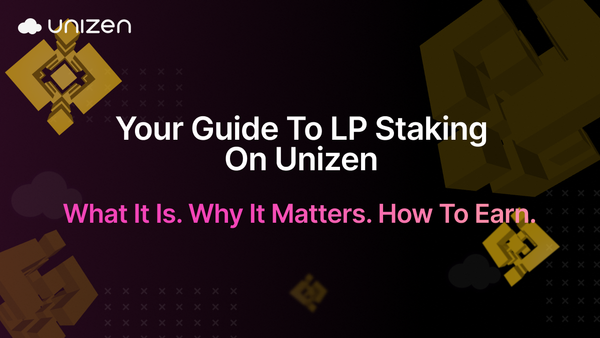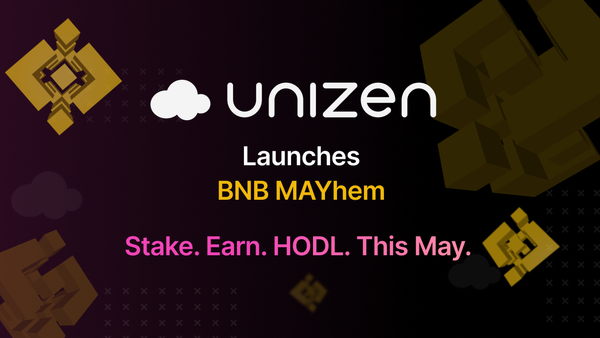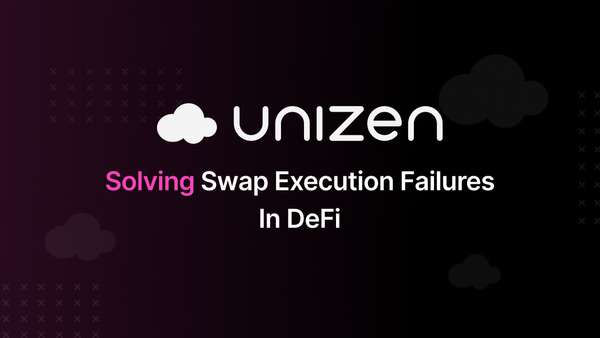How To Create a Cryptocurrency
This comprehensive guide walks you through the process of creating a cryptocurrency, including planning, development, and deployment. Ideal for anyone looking to dive into the world of digital currencies.

Creating cryptocurrencies changed how we handle money. Since Bitcoin started in 2009, many new cryptocurrencies have been made. These digital coins can be used for buying, selling, and saving money without needing a bank. Anyone can create a cryptocurrency to facilitate these transactions. Making your cryptocurrency involves using a special technology called blockchain. This guide will explain ways to create a cryptocurrency in simple steps.
The main reason to create a cryptocurrency is to make a system where people can control their own money. With traditional money, banks are in charge. Cryptocurrencies let you send money directly to each other. This makes transactions faster and cheaper. Cryptocurrencies also provide transparency and security. Every transaction is recorded on a public ledger that cannot be changed. This helps to build trust among users.
Some cryptocurrencies aim to solve problems with current financial systems. They might offer faster transactions or better ways to handle large transactions. Others focus on privacy, allowing users to transact without revealing their identities. Creating a cryptocurrency can also help more people access financial services. In many places, people do not have bank accounts. Cryptocurrencies can reach these people and give them a way to save and spend money.
Cryptocurrencies also represent other types of assets, like real estate or stocks. This allows people to own small parts of these assets and trade them easily. In this guide, we will walk you through the simple steps to create your cryptocurrency, from coming up with an idea to launching it for others.
1. Preliminary Considerations
Before you start creating your cryptocurrency, it's important to think about a few key things. This will help guide you through the process and ensure your project succeeds.
1.1. Define Your Vision and Mission
The first step in creating cryptocurrency is to have a clear vision and mission for your cryptocurrency. Ask yourself why you want to create it. What do you hope to achieve? Your vision will guide all your decisions and keep you focused.
1.2. Identify the Problem Your Cryptocurrency Aims to Solve
Think about the specific problem your cryptocurrency will solve. Maybe you want to make transactions faster, cheaper, or more private. Perhaps you want to help people who do not have access to traditional banking. Identifying this problem will help you design a cryptocurrency that meets real needs.
1.3. Technical Knowledge and Skills
If you are going to create a cryptocurrency, you'll need to know some programming languages. Python, C++, and Solidity are common choices. Python is suitable for beginners and is easy to read. C++ is more complex but offers more control. Solidity is used for creating smart contracts on the Ethereum platform. You also need to understand blockchain technology. A blockchain is a chain of blocks, where each block contains a list of transactions. This technology makes it possible to create secure and transparent transactions.
Cryptographic techniques are also important. These techniques help to secure transactions and control the creation of new units of your cryptocurrency. Understanding how these work will help you build a strong and secure crypto. Considering these factors will better prepare you to create your own cryptocurrency. A clear vision and the right skills will lead you to success.
2. Choosing the Right Approach
When creating a cryptocurrency from scratch, you can choose between building a new blockchain with a native cryptocurrency or using an existing blockchain platform. Each approach has its benefits and challenges.
2.1. Creating a New Blockchain and Native Cryptocurrency
Creating a new blockchain gives you complete design freedom over every aspect of your digital asset. You can design it to meet your specific needs, from the way transactions are processed to the features and rules of the network. This freedom allows you to innovate and solve problems in unique ways. Here are the steps to follow in creating a new blockchain:
- Define the Purpose and Features: Start by clearly defining the purpose of your blockchain. What problem will it solve? What features will it have?
- Choose a Consensus Mechanism: Decide how transactions will be verified on your blockchain. Common methods include Proof of Work (PoW) and Proof of Stake (PoS). PoW is used by Bitcoin and requires solving complex puzzles. PoS is used by Ethereum and relies on validators who hold and stake the cryptocurrency.
- Design the Blockchain Architecture: Plan the structure of your blockchain. Decide how blocks will be created, how data will be stored, and how nodes will communicate with each other.
- Develop the Blockchain Protocol: Write the code for your blockchain. This includes the rules for creating and verifying transactions, forming blocks, and securing the network. Programming languages like C++ and Python are often used when you create a token or make your own cryptocurrency.
- Create Cryptocurrency: Develop the native cryptocurrency or token that will be used on your blockchain. Define how new coins will be created, how many will exist, and any rules for transactions and rewards.
- Test the Blockchain: Thoroughly test your blockchain to find and fix any issues. This includes testing for security vulnerabilities, performance problems, and user experience.
- Launch the Blockchain: Once testing is complete, you can launch your blockchain. This involves setting up nodes, distributing the cryptocurrency, and promoting your new digital asset to attract users and developers.
2.2. Modifying an Existing Blockchain (Hard Fork)
If creating a new blockchain from scratch seems too complex, modify an existing blockchain through a process called a hard fork. This method leverages the source code of an existing blockchain, allowing you to make specific changes while benefiting from the established technology and network.
Using the source code from popular blockchains like Bitcoin, Ethereum, or Litecoin, saves you time and effort. These blockchains have already proven their stability and security. A hard fork allows you to make changes without starting from scratch, giving you a solid foundation for your cryptocurrency. You can achieve this by following these technical steps and requirements:
- Choose a Blockchain to Fork: Select a blockchain that closely matches your vision and goals and considers if you want to create a token or make your own cryptocurrency. Consider factors like consensus mechanism, transaction speed, and community support when you create one.
- Understand the Source Code: Study the source code of the chosen blockchain. This step is crucial as you need to understand how the existing blockchain functions before making any modifications. Open-source repositories on platforms like GitHub can be very helpful.
- Set Up a Development Environment: Prepare your development environment by installing the necessary tools and dependencies. You’ll need a code editor, a version control system (like Git), and blockchain-specific libraries and frameworks.
- Modify the Source Code: Make the necessary changes to the blockchain’s code. This can include altering transaction rules, changing block size, adjusting mining difficulty, or implementing new features. For example, you might modify parameters in files written in C++, Python, or other languages used by the blockchain.
- Create a New Genesis Block: The Genesis Block is the first block of your new blockchain. Create a new Genesis Block to mark the starting point of your fork. This block should reflect your custom settings and any initial distribution of your cryptocurrency.
- Test the Hard Fork: Before launching, thoroughly test your modified blockchain. This involves running nodes, mining blocks, and conducting transactions to ensure everything works as expected. Testing helps identify and fix bugs or issues.
- Launch Your Forked Blockchain: if you want to create a cryptocurrency or create your own blockchain, once testing is complete, you can launch your new blockchain. This involves setting up nodes, distributing the initial supply of your cryptocurrency, and informing the community about your hard fork.
2.3. Launching a New Cryptocurrency on an Existing Blockchain
Another approach to creating a cryptocurrency is to use an existing blockchain platform like Ethereum or Binance Smart Chain. These platforms allow you to create a new cryptocurrency without the need to build or modify a blockchain, by following these steps:
- Define Your Token’s Purpose and Specifications: Determine the purpose of your token (e.g., utility token, security token) and its specifications, such as the total supply, name, symbol, and decimal places.
- Choose a Blockchain Platform: Select a platform that best suits your needs. Ethereum is widely used for its robust smart contract capabilities, while Binance Smart Chain offers lower fees and faster transactions.
- Write a Smart Contract: Develop a smart contract that defines the rules and functions of your token. For Ethereum, you can use the Solidity programming language. For Binance Smart Chain, you can also use Solidity as it is compatible with the Ethereum Virtual Machine (EVM). Use standard templates like ERC-20 (Ethereum) or BEP-20 (Binance Smart Chain) to simplify the process. These templates provide the basic functionality needed for most tokens.
- Deploy the Smart Contract: Deploy your smart contract to the chosen blockchain. This process involves sending the contract code to the blockchain network, which requires paying a deployment fee (gas fee). Use tools like Remix (for Ethereum) or Binance Smart Chain’s deployment tools to facilitate this process.
- Verify and Test the Token: After deployment, test your token to ensure it works as expected. Conduct various transactions to verify the token’s functionality.
- List Your Token on Exchanges: To make your token available for trading, you can list it on decentralized exchanges (DEXs) like Uniswap (for Ethereum) or PancakeSwap (for Binance Smart Chain). You can also apply to list your token on centralized exchanges, although this may involve more stringent requirements and fees.
- Promote Your Token: Create a marketing plan to promote your token. This can include social media campaigns, community engagement, partnerships, and other promotional activities to attract users and investors.
Benefits of Using an Existing Blockchain
- Ease of Use: Creating a cryptocurrency on these platforms is relatively straightforward. You can use pre-existing frameworks and tools designed for token creation.
- Security and Reliability: These platforms are well-established, with powerful security measures and a large user base. This enhances the trust and reliability of your new cryptocurrency.
- Smart Contracts: Both Ethereum and Binance Smart Chain support smart contracts, allowing you to automate transactions and create complex financial products.
- Interoperability: Tokens created on these platforms can easily interact with other decentralized applications (dApps) and services within the same ecosystem.
- Community and Support: These platforms have active communities and extensive documentation, making it easier to get help and support during the development process.
Limitations of Using an Existing Blockchain
- Less Control: Using an existing platform means you are bound by its rules and limitations. You have less control over the underlying blockchain technology.
- Fees: Transactions on these platforms require fees (gas fees), which can become significant, especially during times of high network congestion.
- Scalability Issues: Some platforms (like Ethereum), can face scalability issues, resulting in slower transaction times and higher fees during peak usage periods.
2.4. Hiring a Blockchain Developer
Creating a cryptocurrency, whether by building a new blockchain, forking an existing one, or using a platform like Ethereum, is technically demanding. There are 3 ways to create your own token or coin. Hiring a blockchain developer ensures that your project is executed correctly and efficiently.
When to Consider This Option
- Lack of Technical Expertise: If you or your team do not have the necessary technical skills, hire a blockchain developer.
- Complexity of the Project: For complex projects that involve creating a new blockchain or making significant modifications to an existing one.
- Time Constraints: If you need to launch your project quickly, hiring a developer speeds up the process by leveraging their experience and skills.
- Quality Assurance: Professional developers help ensure the quality and security of your cryptocurrency. They conduct thorough testing and provide robust solutions to potential issues, reducing the risk of bugs and vulnerabilities.
Finding and Selecting the Right Developer
Here are steps to follow to find the right developer for your project:
- Define Your Requirements: Clearly outline what you need from a blockchain developer. This includes the specific tasks they will handle, the skills required, the project timeline, and your budget. Having clear requirements will help you find the right fit.
- Look for Experienced Developers: Seek developers with proven experience in blockchain development. Look for portfolios that include successful projects, relevant skills, and positive client feedback. Platforms like LinkedIn, GitHub, and professional networks are useful for finding experienced developers. Post your job on specialized job boards and freelance platforms such as:
- Conduct Thorough Interviews: During interviews, ask about the developer’s experience with specific blockchain technologies and programming languages relevant to your project (e.g., Solidity for Ethereum, C++ for Bitcoin). Discuss their approach to problem-solving, security, and testing.
- Evaluate Their Problem-Solving Skills: Provide potential candidates with a small project or coding challenge related to blockchain development. This will help you assess their technical skills, problem-solving abilities, and how they approach real-world scenarios.
- Check References and Past Work: Ask for references from previous clients or employers and review past projects. This gives you insights into the developer’s reliability, work ethic, and quality of work.
- Negotiate Terms and Agreements: Once you have selected a developer, negotiate the terms of the contract, including payment, deadlines, and project milestones. Ensure that both parties have a clear understanding of expectations and deliverables.
- Establish Clear Communication Channels: Set up regular meetings and updates to monitor the project’s progress. Effective communication ensures that the project stays on track and any issues are addressed promptly.
3. Technical Steps to Create a Cryptocurrency
This chapter will guide you through the key technical steps needed to build a cryptocurrency, from choosing a consensus mechanism to creating a user interface.
3.1. Choose a Consensus Mechanism
The consensus mechanism is how your blockchain will agree on the state of the ledger. It ensures all participants validate and agree on transactions. Consensus mechanisms to choose from include:
- Proof of Work (PoW): This mechanism requires miners to solve complex puzzles to validate transactions. It's used by Bitcoin and is known for its security.
- Proof of Stake (PoS): Here, validators are chosen based on the number of coins they hold and are willing to "stake" as collateral. It's more energy-efficient than PoW and used by Ethereum 2.0.
- Other Consensus Mechanisms: There are other methods like Delegated Proof of Stake (DPoS), Proof of Authority (PoA), and Practical Byzantine Fault Tolerance (PBFT) that offer different benefits and trade-offs.
3.2. Design the Blockchain Architecture
The architecture of your blockchain determines how it operates and how secure it is.
- Public vs. Private Nodes: Decide if your blockchain will be public (accessible to anyone) or private (restricted access).
- On-site vs. Cloud Hosting: Choose whether to host your nodes on physical servers (on-site) or in the cloud, considering factors like cost, control, and scalability.
- Node Specifications: Define the technical requirements for running a node, such as processing power, memory, and storage.
3.3. Develop and Audit the Code
Writing and securing the code is vital for a functional and secure blockchain.
- Coding the Blockchain: Write the core code that will run your blockchain. This includes defining how blocks are created, validated, and linked.
- Conducting Security Audits: Perform thorough security audits to find and fix vulnerabilities. This step ensures your blockchain is safe from attacks.
- Testing the Blockchain: Test your blockchain under different scenarios to ensure it works correctly and can handle various situations.
3.4. Establish APIs
APIs (Application Programming Interfaces) allow your blockchain to interact with other applications. APIs are essential for enabling users and developers to interact with your blockchain, such as for wallet services or data retrieval. Use existing API solutions like Bitcore or Infura to simplify development and enhance functionality. Combine different APIs to provide comprehensive services and improve user experience.
3.5. Create a User Interface
The user interface is how users will interact with your cryptocurrency. Create an easy-to-use and visually appealing interface to ensure a positive User Interface (UI) and User Experience (UX).
Set up servers and databases to handle user data and transactions securely and efficiently. Develop the frontend and backend of the user interface, ensuring it communicates seamlessly with your blockchain, especially if you want to create your own coin.
4. Legal and Regulatory Considerations
Creating and launching a cryptocurrency involves navigating various legal and regulatory frameworks. This chapter will guide you through the key legal and regulatory considerations.
4.1. Setting Up a Legal Entity
Decide the type of legal entity for your cryptocurrency project. Common options include corporations, limited liability companies (LLCs), and non-profit organizations. The choice will depend on your goals, the nature of your project, and tax considerations. Ensure to register your business with the appropriate government authorities in your jurisdiction. This helps establish your project as a legitimate entity and helps protect your assets.
4.2. Acquiring Necessary Licenses
Research and identify the licenses and permits required to operate a cryptocurrency business in your jurisdiction. These include money transmitter licenses, financial service licenses, and other specific permits. Submit applications for the necessary licenses. This process involves providing detailed information about your business, its operations, and its compliance measures.
4.3. Compliance with KYC and AML Regulations
Implement Know Your Customer (KYC) procedures to verify the identity of your users. This typically involves collecting information such as names, addresses, and government-issued IDs. KYC helps prevent fraud and ensures that your users are who they claim to be.
Also, ensure to develop and enforce Anti-Money Laundering (AML) policies to detect and prevent money laundering activities. This includes monitoring transactions for suspicious activity and reporting any that meet the criteria to the relevant authorities.
4.4. Understanding International Cryptocurrency Laws
Cryptocurrency laws vary significantly from one country to another. Research the regulations in each country where you plan to operate. This includes understanding the legal status of cryptocurrencies, tax implications, and reporting requirements.
Consult with legal experts who specialize in cryptocurrency and international law. They can help you navigate the complexities of global regulations and ensure compliance. Stay informed about changes in cryptocurrency regulations. Laws and regulations in this field are continually evolving, so it’s important to adapt your practices to remain compliant.
5. Launching and Maintaining the Cryptocurrency
Launching and maintaining a cryptocurrency involves more than just the technical aspects. It's essential to ensure a successful launch, maintain security, and build a supportive community.
5.1. Minting the Cryptocurrency
Minting a cryptocurrency is the process of generating new coins or new tokens and making them available to users. This can be done through an Initial Coin Offering (ICO) or other distribution mechanisms like airdrops.
- Initial Coin Offering (ICO): An ICO is a popular way to raise funds for your cryptocurrency project. It involves selling a portion of the cryptocurrency to early investors in exchange for other cryptocurrencies (like Bitcoin or Ethereum) or fiat money. To conduct an ICO, you need to create a detailed whitepaper explaining your project, set up a secure platform for the sale, and promote the ICO to attract investors.
- Airdrops and Distribution Mechanisms: Airdrops involve distributing free tokens to a broad audience, usually to raise awareness and attract users to your cryptocurrency. Other distribution mechanisms include rewarding early adopters, distributing tokens through staking programs, or integrating with existing platforms to reach a wider audience.
5.2. How to Ensure Security
Ensuring the security of your cryptocurrency is paramount. This involves implementing robust network security measures, conducting smart contract audits, and providing secure wallet solutions for users. Prioritizing security helps you protect against attacks, build trust with users, and maintain the integrity of your cryptocurrency.
- Network Security Measures: Implement robust network security measures to protect against attacks. This includes using secure coding practices, regularly updating software, and monitoring the network for suspicious activity. Consider using a decentralized network of nodes to enhance security and resilience against attacks.
- Smart Contract Audits: Conduct thorough audits of your smart contracts to identify and fix vulnerabilities. Third-party audits by reputable firms can provide an additional layer of security and build trust with users. Regularly update and maintain smart contracts to address any new security threats or bugs.
- Wallet Security: Provide secure wallet solutions for your users to store and manage their coins. This includes developing wallets with strong encryption, multi-factor authentication, and secure key management. Educate users on best practices for wallet security, such as keeping private keys safe and using hardware wallets for large amounts of cryptocurrency.
5.3. Community and Ecosystem Building
Creating a vibrant community and a robust ecosystem adds to the success of your cryptocurrency. Engage with users and investors through marketing and active community participation. Build partnerships and collaborate with other projects to expand your crypto reach and use cases. Ensure continuous development and updates to maintain user confidence and drive adoption.
- Marketing and Community Engagement: Develop a comprehensive marketing strategy to promote your cryptocurrency. Use social media, forums, and other platforms to engage with potential users and investors. Also, work on building a strong community by actively participating in discussions, providing regular updates, and addressing user concerns. A supportive community drives the adoption and growth of your cryptocurrency.
- Partnerships and Collaborations: Form partnerships with other blockchain projects, businesses, and developers to enhance your cryptocurrency’s ecosystem. Collaborations lead to new use cases, integrations, and increased visibility. Attend industry conferences and events to network with potential partners and promote your project.
- Continuous Development and Updates: Continuously improve your crypto by adding new features, fixing bugs, and enhancing security. Regular updates show that the project is active and well-maintained, which boosts user confidence. Gather feedback from the community to identify areas for improvement and prioritize development efforts.
6. Case Studies and Examples
This chapter explores some well-known cryptocurrencies, their creation processes, and what can be learned from their successes and failures.
6.1. Successful Cryptocurrencies and Their Creation Process
Understanding the creation process and success factors of notable cryptocurrencies provides valuable insights for launching your own. We explore the origins and key elements that contributed to the success of Bitcoin, Ethereum, and Binance Coin.
Bitcoin (BTC)
- Creation Process: Bitcoin was created by an anonymous person or group known as Satoshi Nakamoto in 2009. It introduced the concept of a decentralized digital currency using blockchain technology. The consensus mechanism used is Proof of Work (PoW), which involves miners solving complex puzzles to validate transactions.
- Success Factors: Bitcoin’s success can be attributed to its first-mover advantage, robust security, and decentralized nature. It has become widely accepted as a store of value and a medium of exchange.
Ethereum (ETH)
- Creation Process: Ethereum was proposed by Vitalik Buterin in 2013 and went live in 2015. It introduced the concept of smart contracts, allowing developers to create decentralized applications (dApps). Ethereum uses the Proof of Stake (PoS) consensus mechanism as of Ethereum 2.0, which is more energy-efficient than PoW.
- Success Factors: Ethereum’s flexibility and support for smart contracts have made it the platform of choice for many blockchain projects. Its large developer community and continuous updates have also contributed to its success.
Binance Coin (BNB)
- Creation Process: Binance Coin was launched in 2017 by the Binance cryptocurrency exchange. Initially, it was an ERC-20 token on the Ethereum blockchain. But it later migrated to its own Binance Chain. BNB is used to pay for transaction fees on the Binance exchange and other services within the Binance ecosystem.
- Success Factors: BNB’s integration with the popular Binance exchange provided immediate utility and demand. Regular token burns (reducing the total supply) have also helped maintain its value.
6.2. Lessons Learned From Failed Cryptocurrencies
Examining failed cryptocurrencies offers important lessons for avoiding similar pitfalls. Here, we look at the downfall of BitConnect, OneCoin, and Mt. Gox exchange to understand what went wrong and how to avoid these mistakes in future projects.
BitConnect (BCC)
- Creation Process: BitConnect was launched in 2016 as a cryptocurrency lending and exchange platform. It promised high returns through its lending program, where users could lend their BCC tokens in exchange for daily interest.
- Failure Factors: BitConnect was widely criticized for its Ponzi scheme-like structure. In early 2018, regulatory warnings and investigations led to the shutdown of its lending platform, causing the BCC token to lose nearly all its value.
- Lessons Learned: Transparency and regulatory compliance are essential. Promising unrealistic returns and lacking a sustainable business model can lead to failure and legal issues.
OneCoin
- Creation Process: OneCoin was promoted as a digital currency but never had a functional blockchain. Launched in 2014, it attracted investments through aggressive marketing and promises of high returns.
- Failure Factors: OneCoin was exposed as a fraudulent scheme, with its leaders arrested and charged with various crimes. It was revealed that OneCoin had no real technology or blockchain behind it.
- Lessons Learned: Authenticity and technological foundation are important. A cryptocurrency without a legitimate underlying technology is doomed to fail once the fraud is uncovered.
Mt. Gox (Exchange)
- Creation Process: Mt. Gox was once the largest Bitcoin exchange, handling over 70% of all Bitcoin transactions at its peak. It was established in 2010 and quickly grew in popularity.
- Failure Factors: In 2014, Mt. Gox filed for bankruptcy after losing 850,000 Bitcoins (worth about $450 million at the time) due to hacking and mismanagement. The exchange faced numerous security issues and lacked adequate internal controls.
- Lessons Learned: Security is paramount for any cryptocurrency platform. Proper management, security protocols, and safeguards against hacking are critical to maintaining user trust and protecting assets.
Conclusion
In conclusion, thorough research, careful planning, a strong focus on security and compliance, community engagement, and staying informed about industry trends are key to creating a successful cryptocurrency. These strategies will help you navigate the complexities of the cryptocurrency landscape and position your project for long-term success.



